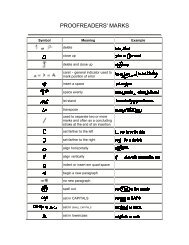View - Martin Kröger - ETH Zürich
View - Martin Kröger - ETH Zürich
View - Martin Kröger - ETH Zürich
You also want an ePaper? Increase the reach of your titles
YUMPU automatically turns print PDFs into web optimized ePapers that Google loves.
THERMODYNAMICALLY ADMISSIBLE REPTATION MODEL<br />
1299<br />
where<br />
ṡ tot 1 s 1 2˙ dissip .<br />
10<br />
This drift velocity for s means there is only a rescaling of the position label for the tube<br />
segment when the chain relaxes in the tube. The third term creation/destruction term on<br />
the right side of Eq. 9 compensates for configurations lost or gained at the boundaries.<br />
The terms involving second-order derivatives in Eq. 9 are of irreversible nature and<br />
express the erratic reptational motion along the chain contour second-order derivative<br />
with respect to s with the reptation time d and constraint release second-order derivative<br />
with respect to u with the orientational diffusion coefficient D, respectively. The<br />
form of D is<br />
D 1 6 1<br />
1<br />
˙ dissip<br />
<br />
2<br />
d <br />
H ˙ dissip<br />
<br />
, 11<br />
where H(x) is the Heaviside step function. The 1 term is interpreted as representing<br />
‘‘double reptation,’’ and the 2 term represents the CCR mechanism. The quantities 1/ d<br />
and ˙ dissip / determine the constraint release rate due to the loss of entanglements<br />
caused by reptation motion and chain retraction of side chains, respectively. The parameters<br />
1 and 2 determine the transfer rate from the constraint release rate to the relaxation<br />
rate of chain orientation, here we take 1 2 1/. This choice is motivated by<br />
the work of Mead et al. 1998 in connection with the appearance of their switch function.<br />
The argument is that the constraint release causes not only chain segments reorientation,<br />
but also contour length shortening this effect is not explicitly taken into account<br />
here. The role of the parameters 1 and 2 is to apportion the effects of constraint<br />
release between these two effects. When the chain is unstretched, the constraint release<br />
causes only chain segments reorientation; when the chain is highly stretched, the constraint<br />
release causes mainly chain contour length shortening. Hence, the parameters must<br />
be chosen in such a way that they approach unity when is near unity, and approach zero<br />
when is large.<br />
Conservation of the total probability implies the boundary conditions<br />
f˜ f˜<br />
0,<br />
ss 0<br />
ss 1<br />
12<br />
where f˜(s,r) f (u,s,r)d 3 u 1. At the chain ends, we assume random orientation by<br />
specifying the distribution<br />
fu,s,r 1<br />
u1, s 0,1, 13<br />
4<br />
which is common practice, but has been opened to discussion by <strong>Kröger</strong> and Hess 1993.<br />
The extra stress tensor consists of two contributions, 1 2 , namely, the original<br />
Doi–Edwards contribution<br />
1 r 3Zn p k B T<br />
0<br />
1<br />
uuf u,s,rd 3 uds,<br />
14





